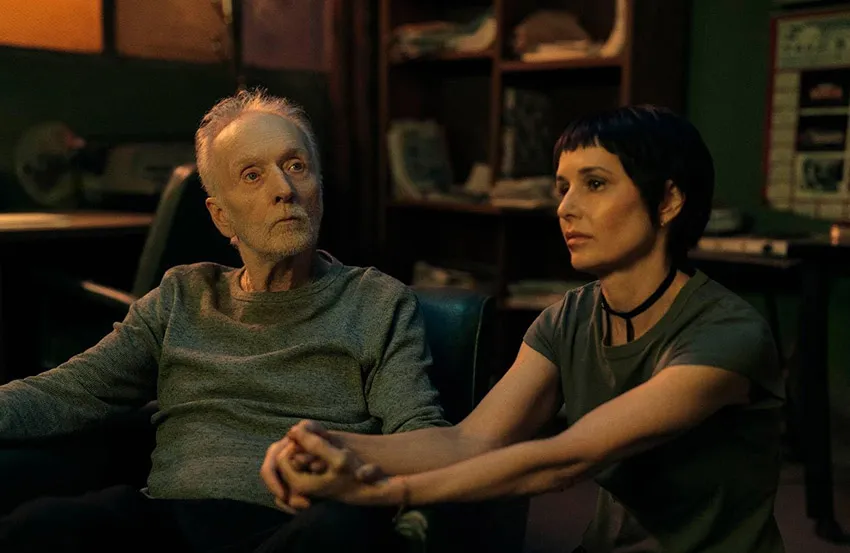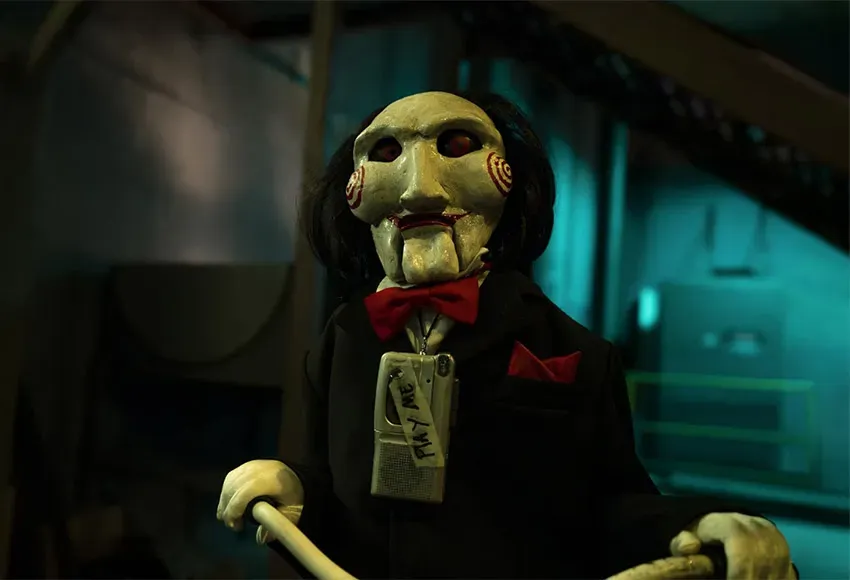SAW X
Theaters
Saw X is the best film in the series since the original hit screens back in October of 2004 and birthed the term "torture porn." This is the first entry in the franchise that I can say I enjoyed without reservation since that one. This prequel/sequel hybrid is a surprisingly ambitious chapter in the ongoing story of John Kramer and his acolytes, with returning director Kevin Greutert (Saw VI and Saw 3D) and writers Josh Stolberg and Pete Goldfinger – who dropped the ball with Jigsaw and Spiral – all deserving kudos for what they've accomplished.
The filmmakers have returned the series to its roots. Taking place between the events of the first film and Saw II, the narrative is far more self-contained and isn't concerned with trying to be bigger or more outlandish than the pictures that preceded it. Most importantly, this is the first time John Kramer – once again deliciously portrayed by Tobin Bell, who's never been better – has had a character arc that makes sense. This gives an added insight into the whys behind his repugnant machinations no other Saw has ever explored in such subtly candid detail, and I'd be lying if I said I saw that coming.
For the uninitiated, this former architect and inventor also goes by the bloodcurdling nickname "Jigsaw." After the death of his wife, he decided to play a series of lethal games with those he felt needed to have their misdeeds judged. Live or die – that was entirely up to them, just as long as they were willing to compete in the time allotted and didn't mind ending up in the hospital with broken bones, severed limbs, or gruesome puncture wounds if they were lucky enough to win.
But Kramer is dying from a rare form of brain cancer, and Saw X picks things up as he realizes he's exhausted his treatment options. Yet salvation potentially comes in the visage of Dr. Cecilia Pederson (Synnøve Macody Lund). She claims that a radical new therapy combining an unapproved drug cocktail and experimental surgery could save his life. Not knowing Kramer's alter ego, she and her crack surgical staff offer to help him. After all, $250,000 is nothing if it means another three or four decades of life.
It goes without saying, but trying to con John Kramer is a very, very, very bad idea. Dr. Pederson and the rest of her team are about to experience a nightmare like no other, as each person who had a hand in giving Kramer false hope is soon going to be stuck in one of his infamous traps, fighting for their lives. Limbs will be severed. Brains will be carved into with a sharpened scalpel. Blood – oceans and oceans of blood – will flow.

While we've seen much of that before in the previous installments, never has the focus shifted entirely to Kramer and, even better, his blossoming relationship with his star pupil: Amanda Young (Shawnee Smith). When she arrives to assist her mentor in his task to teach these grifters their live-or-die lessons, that's when the film soars to life. There is a fascinating depth to their bond that the series has never taken the time to explore. Kramer and Young become actual human beings with authentic dimensionality, and while what they're doing remains inexcusably abhorrent, it's still impossible not to root for their success.
The other thing that Greutert, Stolberg, and Goldfinger do – and this is key – is that they treat the audience with respect and do not trivialize their collective intelligence. The filmmakers know that everyone is in on the joke. They understand that, for all the misdirects, for every clever red herring, few people sitting in the theater won't know exactly what is going on and where everything will end up.
Because of this, Greutert and company actually let us be a part of the action. It is as if the viewer is another of Kramer's pupils, and they leave it up to us to decide if we want to put our morals aside and follow his lead, or instead walk away and hold him as accountable for his actions as he does those he places in one of his traps. This ups the ante in unforeseen ways, and that's kind of great.
This is still a Saw effort, of course, which means those traps are incredibly nasty, and there are certainly moments where this entry pushes the envelope of its R rating right to its breaking point. But unlike so many of the other films in this franchise, the bloodletting isn't particularly noxious. Sensationalistic, yes, but never in a way that doesn't suit what is happening. It honestly feels rather warranted most of the time, and as much as I squirmed in my seat, I never felt like the gore and viscera were excessive.
It should be noted that both Bell and Smith are significantly older than they were at the end of Saw III, and the filmmakers don't utilize any digital de-aging trickery to hide that. Some will consider this to be a problem. I did not, as both performances are so good, so suitably in sync with one another, that after about five minutes, I pretty much stopped noticing entirely.
Look, Saw X isn't reinventing the horror wheel. I would think that those interested in the film would know what they are getting into before they purchase a ticket. But while there are no mind-blowing revelations, there's still plenty of fun to be had by all – assuming you're into this sort of thing.
Which I am. I don't remember the last time I felt any Saw sequel lived up to its potential (have any of them?), but this one does so with shocking ease. Kramer's return may be bad news to his victims, but for the rest of us? Playing his new game is a heck of a lot more fun than it has any right to be.


